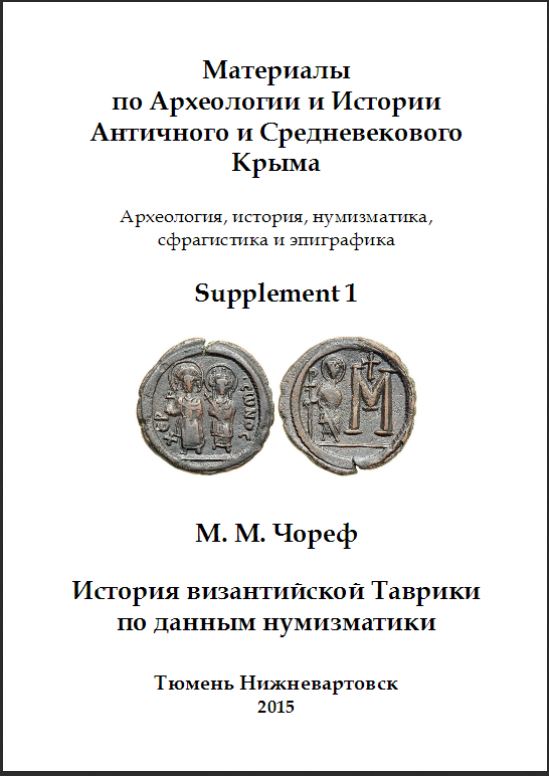
We kindly inform you that, as long as the subject affiliation of our 300.000+ articles is in progress, you might get unsufficient or no results on your third level or second level search. In this case, please broaden your search criteria.

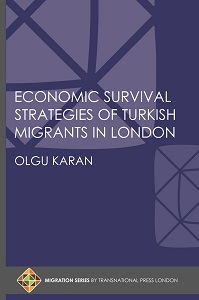
Olgu Karan’s research offers original insights for anyone interested in how and why particular parts of London are now strongly identified with migrants from particular regions of the world.North London’s Green Lanes, a street stretching from Hackney to Haringey, or in local vernacular, from Stoke Newington to Wood Green, has undergone huge transformations over the past 50 years.Turkish Cypriot migrants first came in significant numbers to North London after the 1974 war that displaced hundreds of thousands of both Greek and Turkish Cypriots. They and later Turkish-speaking migrants mainly got jobs in London’s textile manufacturing industry. Those industries largely disappeared in the 1990s.In the 2010s Green Lanes now has several hundred Kurdish and Turkish restaurants and shops. These employ thousands of first, second and third generation Turkey-originating self-employed or family helpers. Karan’s research explains how this massive shift from employed status to self-employed took place. He records the economic devastation brought about by the rapid collapse of the textile industry, arguing this created the struggle for survival that forced thousands into self-employment. Insightfully, Karan also explores the economic basis of this shift. As textile workers, few Turkey-originating migrants had been able to save all the capital they needed to set-up take-away cafes, restaurants or off-licences and general food stores.The book traces the creation of ethnic partnerships and a willingness to provide loans to Imece/Zibare. These are the Turkish and Kurdish names given to village-scale collaborations for harvesting, constructing a water pipeline, providing security for village’s grazing borders with neighbouring villages.
More...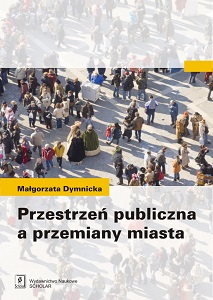
Przestrzeń publiczna, której rodowód sięga czasów starożytności, należy do tych obszarów miejskiej struktury, o których można powiedzieć, że pozwalają na doświadczanie obecności Innych. Dzięki takich cechom, jak otwartość, dostępność, czytelność, można się w niej znaleźć z osobistym bagażem biografii, niebędącym przeszkodą dla pozostałych jej użytkowników. W ostatnich latach sporo miejsca w dyskursie publicznym zajmuje kwestia zaniku, upadku, ale też odrodzenia przestrzeni publicznej. Dynamika kapitalizmu i związana z nim globalizacja, zawrotne tempo przemian w dziedzinie technologii informacyjnej i komunikacji powodują, że dawny porządek oparty na sztywnych podziałach prywatne–publiczne traci powoli na znaczeniu. Odrzucając dwa skrajne stanowiska: z jednej strony apokaliptyczną wizję upadku przestrzeni publicznej, z drugiej zaś – bezkrytyczne jej odrodzenie, w książce podjęto próbę pokazania, że każda z tych perspektyw rodzi różne konceptualizacje, transformacje i rekonstrukcje o charakterze przestrzennym, społecznym i kulturowym, wpisując się w szerszy projekt kształtowania współczesnych tożsamości miasta.
More...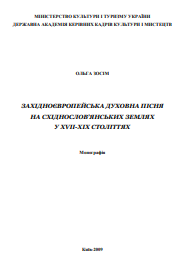
Монографію присвячено малодослідженій у сучасній музичній науці проблемі західноєвропейських впливів у східнослов’янській (і, зокрема, українській) духовній пісенності. У центрі уваги автора – жанр духовної пісні, що розглядається у широкому контексті як явище художньої та церковної культури. Значну увагу приділено літургічному чиннику як одному з провідних у процесі створення східнослов’янського духовно-пісенного репертуару. Багато явищ церковної музичної культури набули нової інтерпретації. Вагому частку становить новий текстовий та музичний матеріал з історії східнослов’янської духовної пісенності. Як підсумок багаторічної роботи джерелознавчого та текстологічного характеру у монографії подано створений на основі українських, білоруських та російських рукописних пісенників XVII-XIX століть системний інципітний каталог західноєвропейських духовних пісень, що увійшли до східнослов’янського духовно-пісенного репертуару. Для музикознавців, культурологів, філологів – мовознавців та літературознавців, літургістів, а також для широкого кола читачів, що цікавляться українською культурою XVII–XIX століть.
More...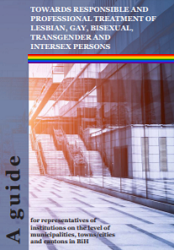
Dear professionals, If you have never had a professional encounter with lesbian, gay, bisexual, transgender or intersex (LGBTI) persons, then this guide is for you. Think about it! If, in your entire career, you have never dealt with an LGBTI person, could it be that you just failed to recognise one? Consider this example. According to census results from 2013, about 80,000 citizens of the Federation of BiH do not belong to any of the three constituent peoples. They have professed to be members of national minorities, Bosnians and/or Herzegovinians, members of other ethnic identities, or simply refused to profess any ethnic affiliation. With this in mind, have you ever had a professional encounter with a Roma person, Jews, Albanians or Montenegrins? Or with people who are Catholics? Around 17,000 people in Sarajevo Canton stated they were Catholics during the census. Surely, you know members of these groups and communities. So how come you do not know any LGBTI persons, or know very few of them, when LGBTI people make up anywhere from 3 to 12 percent of the population in countries around the world. In Sarajevo Canton, 10 percent of the population amounts to more than 40,000 people – is it really possible that you have never had a single LGBTI person ask for your services? It is possible. It is possible in a conservative, close-minded society that openly denounces different sexual orientations, gender identities or sexual characteristics and expertly sweeps domestic violence under the carpet in the name of honour and good reputation among neighbours and family members. It is this kind of society that continues to deny the existence of LGBTI persons. Look around you in public transportation. You will perhaps see around 20 people. According to census results, 16 of them are probably Bosniaks, one person is a Croat or a Serb, while one to two people do not profess any ethnic affiliation. You know at least one person belonging to each of these categories, and yet you will completely disregard the fact that one to two people are members of the LGBTI community. Of course, none of this matters when you use public transportation, nor should it matter. However, there are occasions, especially when it comes to the work of institutions – municipalities, cities/towns and cantons,1 when sexual orientation, gender identity and sexual characteristics become very important. When developing public policies, programs, strategies, action plans, or providing services and carrying out their duties, these institutions should keep in mind that a significant number of people in our society are LGBTI persons who have specific needs and problems. Dear professionals, integrating LGBTI persons in all spheres of public life and recognising their needs is very important if these citizens are to fully enjoy their indispensible, fundamental human rights. Their existence in our society should not be ignored, concealed behind the veil of tradition, hypocritical values and conservative attitudes that negate the needs of these persons. Let us change Bosnia and Herzegovina together. Let us work in our municipalities, towns/cities and cantons to ensure equality of all citizens. We hope that this guide, that was created within the project establishing institutional network for LGBTI persons in Canton Sarajevo, implemented by Sarajevo Open Centre and supported by the USAID’s Marginalized Populations Support Activity in Bosnia and Herzegovina, will contribute to this aim.
More...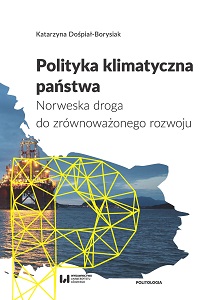
The research assumption of this publication is an in-depth analysis of the process of forming, articulating and implementing the climate policy of Norway. The analysis is aimed at identifying the national conditions of climate action and then examining their translation into the international activity of the state. The choice of Norway was provoked by an interesting question how climate policy is formulated and conducted in a highly developed country, with a consolidated form of democracy and high aspirations in the field of environmental protection, which also has based its development model on oil and gas exports. The analysis of the last three decades of the Norwegian climate policy entitles to the conclusion that the state has managed to combine the roles of the ecological leader and the hydrocarbon exporter. The reflections are focused on showing the political process, determinants, the institutional and legal framework as well as strategies and tools for implementing the adopted objectives of the Norwegian climate policy. The research assumption is to show dependent and independent variables of Norwegian climate policy. The subjects of research are first of all state bodies, but also political parties as well as social organizations and groups (formal and informal). The processual nature of research shows, above all, the evolution of the Norwegian climate policy assumptions over three decades, taking into account their continuity and change. The analysis intentionally covers both political, economic and social ramifications, with the aim to show their complex character, but also to explain the state’s motivation in the international environment.
More...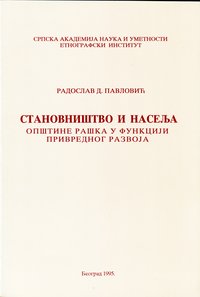
Economic development is certainly the main driving force of demographic and urban geographical changes that arc its function in a certain area and in certain period of socially historical development Characteristics of MECHANICAL MOVING OF POPULATION MIGRATION in the period between Austrian-Turkish wars and The Second World War arc these: This area was on the way of migration currents from Kosovo, Metohija, Montenegro, Hercegovina, Ibarski Kolašin, the area around Novi Pazar and The Sjenica Peštar plateau. It was a phased migration area and each larger immigration was preceded by emigration. The migration from the higher to the lower height above the sea level was conditioned by strengthening of agriculture in comparison with cattle raising, and the migration from villages to towns was conditioned by development of non agricultural activities in the town of Kaška. Periodic and permanent migrations of population were the cause and effect of economic development Seasonal migration of cattle raisers was in connection with semi- nomadic way of raising cattle. Migrations that arc connected with activities of hired coachmen and workmen were conditioned with the development of trade and traffic of hired coachmen and workmen. Seasonal migrations appeared because of the people from the mountains who bought land on the lower height above the sea. Moving of peasants to the town of Raška on market days and during the spring and autumn fair was enlarged with the development of trade in the town. Characteristics of migration after the Second World War are these: Directions of migrations across this area are the same as previous directions of migration currents, and this confirms even more all the necessities that had been the cause of migrations in this area for centuries. The function of phased migration stop did not belong to rural settlements any more, but to the urban areas and suburbs. The influence of migration currents from Montenegro and Pešlar plateau weakened in this period, and the influence of migration current from Kosovo and Metohija strengthened and the important current from the area around Novi Pazar was left. There were less marriage migrations, visiting because of the dowry, and the migrations of girls because of getting married were not only of local character, but they had the character of emigration of population from this area, and in this way the migration from villages to towns became more intensive. Migrations from villages to towns arc the main inner way of moving of the population. They are conditioned by rapid development of non agricultural- activities in urban areas and other working centers. Migrations of population from higher to lower height above the sea level appeared in post war period with strengthening non agricultural activities and with employment of a number of workmen from villages in non-agricultural jobs. Households of peasants' workmen move to places near the road in order to get to their jobs on time. Return migrations appear in this period as well as in the previous periods and they follow some emigrations. Post war economic development in this area and some changes in economic structure conditioned some changes in periodical migrations .Some aspects of periodical migrations of population disappeared the work of hired coachmen and workmen, some just started to disappear seasonal moving of cattle raisers, only 186 inhabitants took part in 1984, some of them arc smaller in size seasonal moving of people from mountains to lower height above the sea level because of tilling the soil, some of them became bigger in size and more intensive migrations connected with fairs in Raška in which between 15.000 and 23.000 take part., and some new aspects of periodical migrations also appeared, such as going to seasonal work and going to temporary work abroad. Daily migrations arc the important aspect of migrations of the population. A small number of daily migrants' workers come from adjoining communities Leposavić, Novi Pazar and Kraljevo. Characteristics of natural moving of population are these: Until 1954 this area was mainly agrarian and there was a rather high birth rate. After 1954 in the area of Raška’s community with the rapid development of non agricultural activities with more people employed outside their households, the need for high birth rate did not exist anymore. In the period between 1961 and 1981 birth rate was lowered from 17,3%» to 13,6%« and mortality rate was higher, from 7,5%o to 8,1%«. and conditioned lowering birth rate in the total migration of the population is characterized by slow population to 29475 (1489% ). Number of habitants was enlarged from 25.837 the origin and population of the community of Raška were influenced by migration currents, l hc origins of most households are from: Montenegro 47,7% (the most people are from families Kuči and Vasojevići) osovo and Metohija 14,59% (most of the families arc from the adjoining community of Leposavid and from Metohija. Novi Pazar (from the area around the town) 7,62%. From the area of Bosnia and Hercegovina, 5,17% (most of the people are from Hercegovina). Population structure after the Second World War has been changing permanently Sex structure was disturbed during the Second World War The process of aging of population became rather indicative According to the aging index from 1981. the young population lived in the towns' communities whereas the old population lived in other communities including the community of Raška In the period between 1953. and 1981, the number of active persons in the area of Raška s community was lowered from 53,42% to 44,51%. and the number of supported persons was enlarged from 45,73% to 47,79% and the number of people who are employed was changed from 0,85% to 7,70% Some measures were taken in order to eliminate illiteracy and to improve education of the population , and the result was satisfactory Between 1961 and 1981, the percentage of illiterate inhabitants was lowered from 34,38% to 18%. The number of inhabitants who finished primary school was enlarged from 3,49 to 15,57, with secondary school from 2.73% to 20,47%. The number of those who had higher education was changed from 0,29% to 1,93%, and the number of faculty educated people was changed from 0,27% to 1,60%. It can be said that the population of this area is nationally homogeneous. Most of the inhabitants arc Serbs, 97,65%. Some significant urban geographical changes in a number of settlements in this area have occurred under the influence of rapid development of non agricultural activities. New settlements of Kopaonik and Brvenik Naselje were formed Two villages, Baljevac and Jošanicka Banja, were transformed into town settlements, and fourteen villages into settlements of a mixed type Urban parts of the settlement were built in the suburban settlements of Raška, Supnje and Varevo ’A weekend settlement Sastavci was built in Lisinc on the mountain Kopaonik. Buildings for miners were built in two villages. "Bela Siena” mine had its building colony in the village Pobrdja, and the 'Korlace mine had its building colony in Korlacc near the mine itself This colony was displaced between 1967 and 1973 because of the pollution Beside roads and railroads, some new parts were built in a number of villages Some parts of Bela Stena and Pobrdje were linked with Baljevac and some parts of Varevo were linked with Raška because the villages were moved near the road. Further development of the population and settlements in the area of Raška s community will be the cause and effect of further economic development of the community and the republic of Serbia. This community, as the area struck by earthquake, had priority until 1990 in the policy of encouraging faster development of economically insufficiently developed communities of the republic of Serbia. According to the long-term social plan between 1980 and 2000. it is expected that the community of Raška will leave the circle of insufficiently developed communities and be able to use its own powers until 2000.
More...
The publication is an outcome of activity of International Network C.A.L.M.A.Z, which deals with interdisciplinary cooperation in PE and geography. The authors are representatives of university departments in the Czech Republic, Slovenia, and Denmark. The publication aims to present how the participating countries approach, in their curricula, the cooperation in PE and geography. The cooperation is viewed from two perspectives – comparison of curricular documents help ascertain how this cooperation is embedded at the theoretical level. The questionnaire survey with teachers represents a probe into the realization form of the curriculum. In the conclusion, possible approaches to integration are discussed, and practical examples are presented.
More...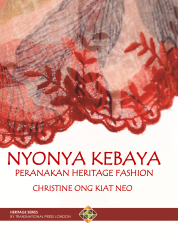
This book combines the passionate and the practical features of the kebaya fashion. It renews the intricate embroidery work of the past through the creative adaptation to fit contemporary demands. The outfit can be worn and cared for on a daily basis or based on creative preferences of the nyonyas. The book also shares tips and ideas on matching the kebayas with the sarongs (skirts) so as to achieve an amazing ensemble! Aspects of the sarong art is also highlighted.
More...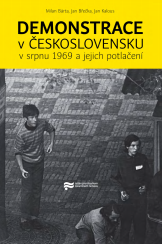
Rok po invazi vojsk pěti států Varšavské smlouvy do Československa proběhly v ulicích mnoha velkých měst rozsáhlé demonstrace, do kterých se zapojili především mladí lidé. Vyjadřování nesouhlasu s přítomností sovětské armády na našem území se mísilo s projevy nespokojenosti s nastoupenou cestou nového vedení komunistické strany. To pouliční protesty očekávalo a nejspíše i přivítalo, podle něj totiž dokazovaly, že tzv. protisocialistické síly existují. Legitimizovaly tak jeho politiku a daly mu do ruky pádné argumenty k postupu proti zbytku reformistů v čele s Alexandrem Dubečkem. Brutální potlačení nepokojů jednotkami tehdejší bezpečnosti, armády a Lidových milicí, které si vyžádalo oběti na životech, posloužilo rovněž jako varování do budoucna a současně jako důkaz předložený sovětskému vedení, že v osobě Gustáva Husáka byl postaven do čela Československa správný člověk. Naopak pro veřejnost symbolizoval srpen 1969 definitivní konec Pražského jara. Předkládaná publikace se na základě rozsáhlého archivního výzkumu snaží přiblížit události srpna 1969 a zasadit je do kontextu tehdejšího dění.
More...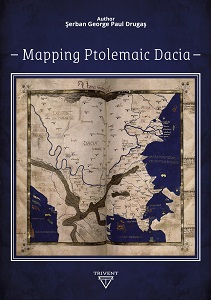
This volume is a contribution to the decipherment of Ptolemy’s universal map, with focus on the territory known as Dacia. The information provided by Ptolemy was translated into modern data considering local features and complying with certain general principles. The difficulty of this task consisted in the way the ancient manuscripts transmitted the original location coordinates, as well as in the way Ptolemy patched together information from ancient itineraries and other sources. The author of this volume conceived a general formula for mapping Dacia based on the information found in the two oldest sources he used. Furthermore, he determined local patterns with the help of the other sources – therefore, defining locations resulted in a better determination of the surrounding relative positions. This information, as well as the correlation of the Ptolemaic locations with archaeological findings, provides an increased recognition of Ptolemaic Dacia, while also contributing to exposing the Ptolemaic universal map.
More...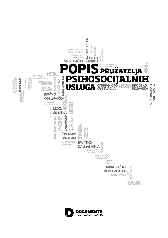
Popis pružatelja psihosocijalnih usluga je nastao sa ciljem informiranja civilnih žrtava rata o dostupnosti organizacija i ustanova koje nude psihosocijalnu pomoć i rehabilitacijske tretmane na području Republike Hrvatske. On je produkt sastanaka i suradnje sa različitim organizacijama i institucijama koje u svojem djelovanju pružaju psihosocijalnu podršku. Spomenuti sastanci sa pružateljima su održani u Vukovaru, Sisku, Zadru i Dubrovniku dok je trening za određeni broj pružatelja bio održan u Osijeku. Popis čine organizacije civilnog društva i državne institucije na području svih županija. Popis sadrži nama dostupne podatke, nije potpun te je podložan promjenama i nadopunama.
More...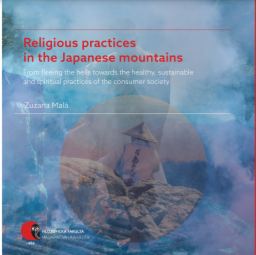
The study examines the Japanese mountains as places of religious practices. The author looks at both the historical and the present-day religious practices enacted in the mountains and asks how the logic of the market has shaped them. By looking through the historical development of religious practices in the mountainous locality of Tateyama, the first three chapters offer an understanding of the relationship between mountains and notions of the afterlife. The case of Tateyama, a popular pilgrimage site during the Edo period, provides an insight into the pilgrimage place and its mountain cult taking into account the economic aspects in the maintenance of the cult. Drawing on insights gained through field research in the Japanese mountains of Tateyama and Dewa Sanzan, the author explores the present-day re-enactments and sustenance of religious practices and their intersection with the cultural heritage concept. These observations have provided a useful perspective on adjustments between providers of religious practices and participants. Although seen as marginal practices, austerities such as taki gyō and the complexity of qualities associated with them are introduced in the last chapter as examples of the creative sustenance of present-day ascetic practices.
More...
In this book an interpretation of two Indo-European mythological themes within their complex context is presented. Considered are especially historical and socio-cognitive aspects of their background. By means of this approach an innovative interpretation of an otherwise traditional mythological structure is proposed as well as a new one introduced. In the first part of the book the matter of well-known Indo-European creation myth is discussed. It is hypothetically concluded that Proto-Indo-European cultural area originated in prehistoric Cargo Cult. Certain motives and themes of Indo-European creation myth are interpreted as possible semantic relics of Pre-Proto-Indo-European Cargo Cult ideology. In the second part an attempt to present the brand new Indo-European mythological structure, so called witch-hunting myth, is made. Analysed are various local manifestations of narrative dealing with the conflict of elites with the demonic army led by a female witch. A basic sujet pattern is identified and then interpreted as an outcome of archaic Indo-European societies’ social and gender setting.
More...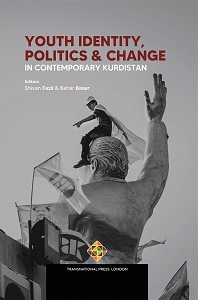
Today’s youth are challenging the older political class around the world and are forming new political generations. Examples from South Africa and elsewhere where peace processes were deemed to be successful show signs of youth disapproval of the current post-conflict conditions. Moreover, the Arab Spring witnessed numerous youth movements emerge in authoritarian and illiberal contexts. This book was prepared in light of these discussions and aims to contribute to these ongoing debates on youth politics by presenting the situation of youth in the Kurdistan Region of Iraq (KRI) as a case study. It will be the first book that specifically focuses on the Iraqi Kurdish youth and their political, social, and economic participation in Kurdistan. The contemporary history of the KRI is marked by conflict, war, and ethnic cleansing under Saddam Hussein and the tyranny of the Ba’ath regime, significantly affecting the political situation of the Kurds in the Middle East. Most of the recent academic literature has focused on the broader picture or, in other words, the macro politics of the Kurdish conundrum within Iraq and beyond. There is little scholarship about the Kurdish population and their socio-economic conditions after 2003, and almost none about the younger generation of Kurds who came of age during autonomous Kurdish rule. This is a generation that, unlike their forebears, has no direct memory of the decades-long campaigns of repression. Studying and examining the rise of this generation of Kurdish young millennials—“Generation 2000”—who came of age in the aftermath of the United States invasion of Iraq offers a unique approach to understand the dynamics in a region that underwent a substantial socio-political transformation after 2003 as well as the impact of these developments on the youth population. Pursuing different themes and lines of inquiry the contributors of the book analyze the challenges and opportunities for young men and women to fulfil their needs and desires, and contribute to the ongoing quest for nationhood and nation-building.
More...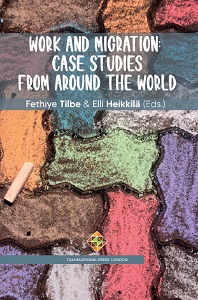
The purpose of this edited book is to look at work and migration from multiple viewpoints and illuminate challenges faced by immigrants in the labour markets around the world. It takes an approach that listens to the voices of different migrant groups in different countries, based mostly on qualitative research. In addition to the main themes of discussion centred on labour markets, this book also makes reference to a wide range of discussion topics which often intersect with employment, labour markets and the work experience of migrants. These include themes such as migrant integration, remittance transfers, relations established and maintained with home countries, legal and institutional arrangements and policy making processes in the host countries, through the concepts of employment and work. The chapters highlight immigrants’ experiences both theoretically and empirically in the contributions around the world. “This book, which includes the experiences of specific groups like qualified, unskilled, and female migrants, makes reference to a wide range of discussion topics such as migrant integration, remittance transfers, relations established and maintained with home countries, legal and institutional arrangements and policy making processes in the host countries, through the concepts of employment and work.”
More...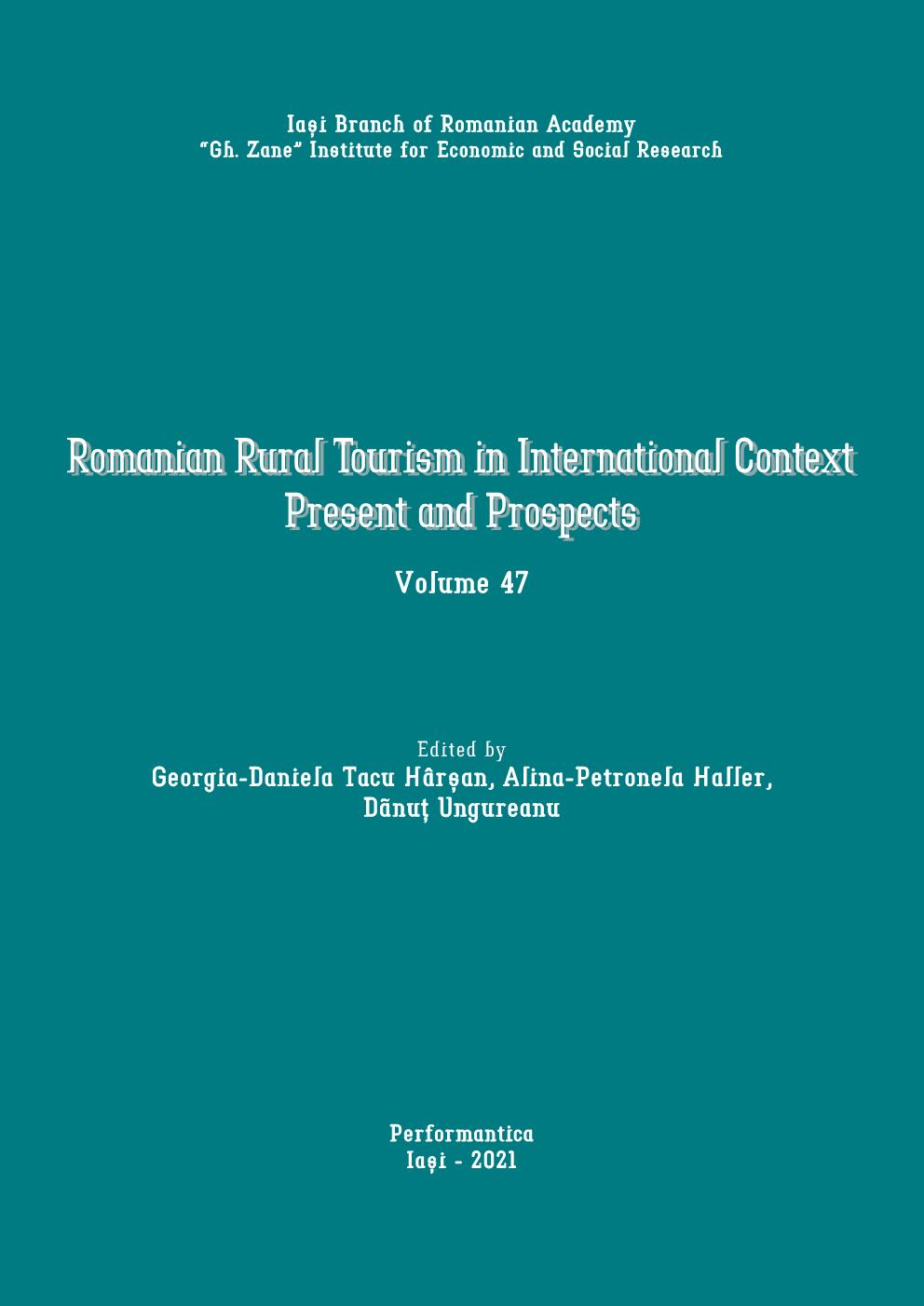
The series ,,Romanian Rural Tourism in International Context. Present and Prospects" explore some of the main concerns of both theorists and practitioners on the following topics: rural tourism, agritourism, ecotourism, tourism in the context of sustainable development at national, regional, and global level, traditionalism vs modernism in tourism, national and regional strategies for rural tourism development and marketing, e-tourism, etc. The series of ,,Romanian Rural Tourism in International Context. Present and Prospects" traditionally approaches the tourism phenomenon from a multidisciplinary perspective: economics, anthropology, ethnography, low, etc.
More...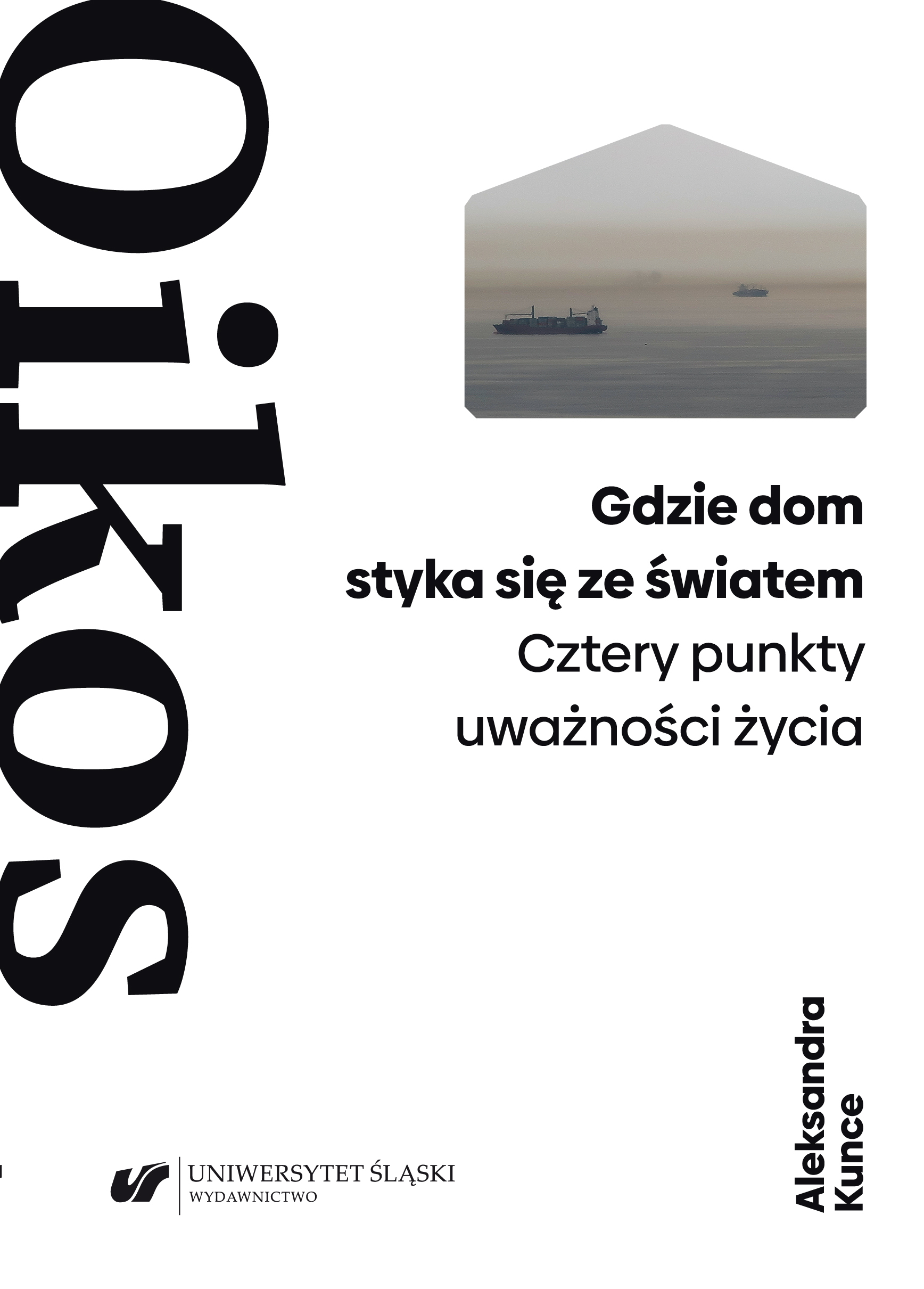
A small thing: four oikological essays, preceded by an introductory word, on our entanglement in the “home-world.” If we were to take the title as the question, “Where does the home meet the world?”, the answer would be: “In the points that require our attentiveness of life.” Attentiveness requires discipline and precision, and it is not only about precision in actions and observations, but about our being at home and in the world, in the changing rhythms of being rooted and wandering. Being mindful guides us towards a place, and concern extends over time to finally lead us home. Home is a peculiar time(lessness); it is a dynamically understood and open place that allows us to direct our desire to what is distant, inconceivable, and unimaginable. When we say ‘home,’ we do not mean a familiar and closed stronghold but a home rooted in the idea of the cosmos. It corresponds also to the idea of Heimat. The four points of contact between home and the world are found through (1) the humanities, (2) man, (3) friendship with the place, and (4) the university. The four oikological essays look into the entanglements, overlaps, but also the truest lack of the indeterminate at the boundary of home, around the threshold that symbolically not only testifies to the boundary in rituals, but delineates the space of attentiveness. At these points where home meets the world, our entanglement in the "home-world" is brought out.
More...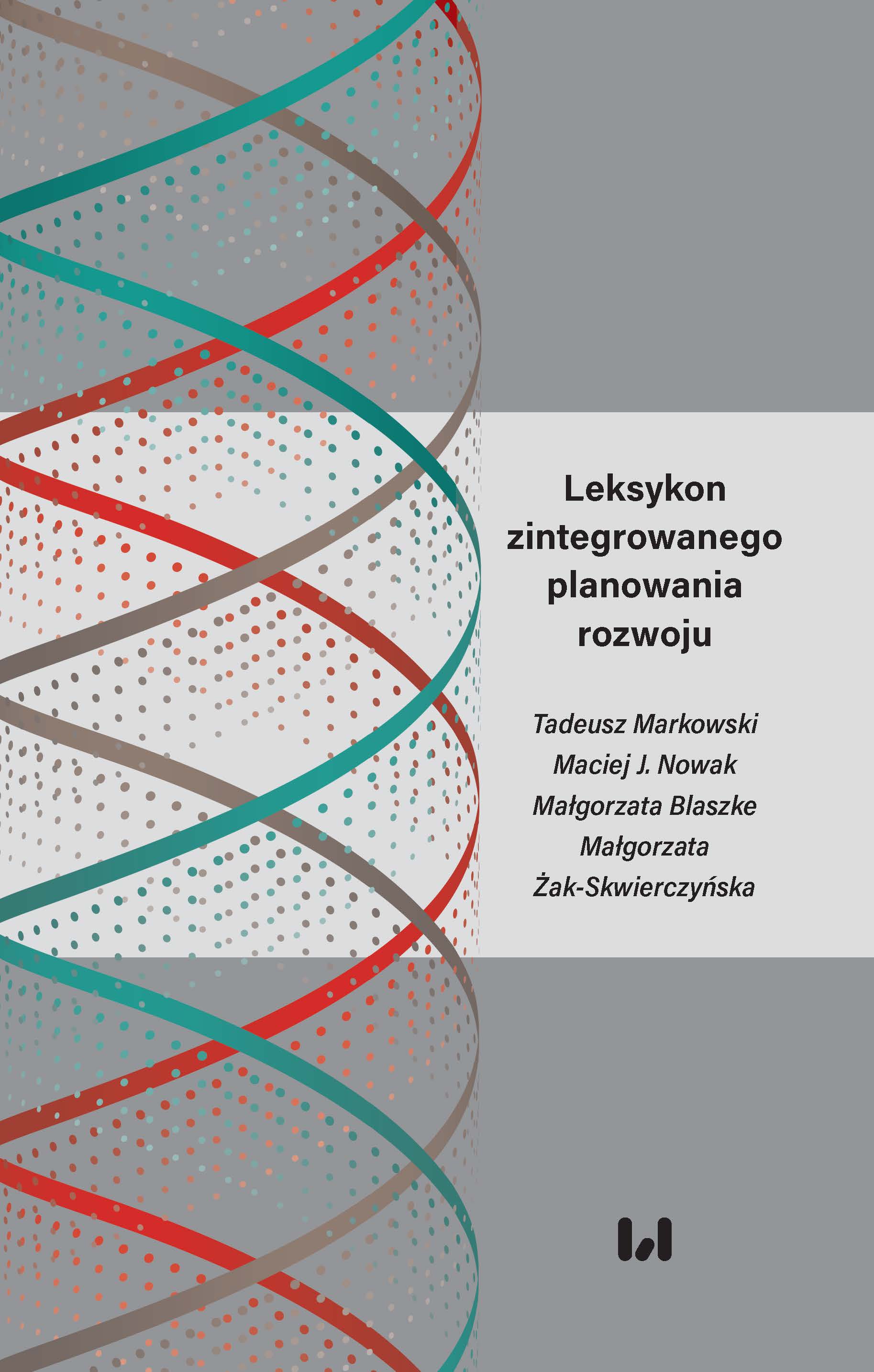
The issue of stimulating socio-economic development in an open market economy requires an increasingly complex and, at the same time, holistic approach to the increasingly complex planning and decision-making process. The sphere of public activities related to the development of modern democratic states is undergoing dynamic changes under the influence of complex global political, social, economic, and environmental changes. This results in hindered communication not only between scientists but also between practitioners and stakeholders of contemporary politics. This fact significantly delays the building of a consensus around the necessary institutional reforms, the development of modern planning concepts, and the creation of an appropriate regulatory system. A particularly important conceptual sphere for polish regional and spatial policy - requiring ordering and clarification of several concepts - is the sphere of integrated development planning.The lexicon is the first study available on the market aimed at partially organizing the terminology related to integrated development planning. It distinguishes over a hundred terms that raise certain interpretation doubts and proposes ways of understanding them referring to the latest research in the field of the theory of regional and local development. The formula of the lexicon assumes a synthetic presentation of individual terms, with the majority of issues being subject to further supplementation. The lexicon is aimed to help not only in the basic understanding of specific terms but also with the basic principles and challenges of contemporary development policy and planning pragmatics.The lexicon was developed by a multi-author and multidisciplinary team. It contains a broad description of terms and indicates the basic supplementary literature for the described term. It is a kind of compendium of knowledge necessary for planning practice and communication drawing on the experience of many disciplines, urban planning, architecture, regional studies, city economics, sociology, political science, and law.
More...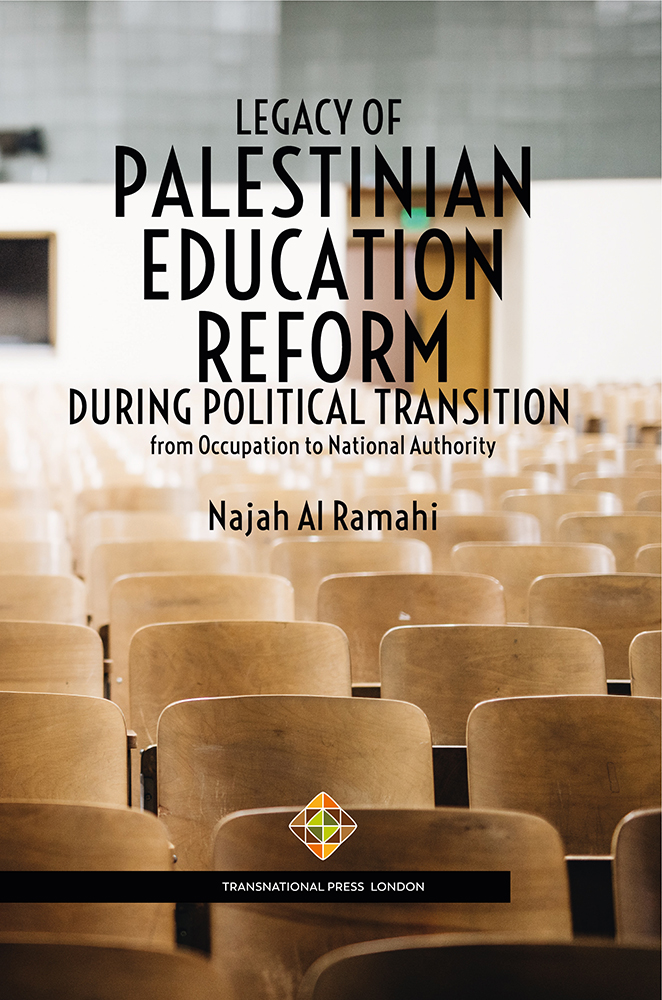
This book makes a major contribution to educational research and literature in exploring process of educational reform in the period of Political transition in Palestine. It is aimed at describing the journey of changing Palestinian primary education and the legacy of establishing the first national education system in Palestine as well as the introduction of a number of educational reforms. The introduction of new educational reforms was urgently needed in order to achieve quality education in Palestinian schools. This was particularly crucial after the prolonged military occupation, which left the education system in a perilous situation and lowered education achievements for a whole generation. The book explores an attempt to retrieve Palestinian education after a prolonged period of military occupation and to rescue the education system from collapsing. It tells the story of reshaping national identity and reviving Palestinian heritage and culture.Therefore, this book is the first one of its kind that captures the story of education reform against a background of struggle that should not be forgotten. It documents a unique period of time in Palestinian history and highlights the beginning of an education system in Palestinians’ hands. Moreover, this book presents real life stories from Palestinian schools and shows the real struggle over power and control in the education system in Palestine.
More...